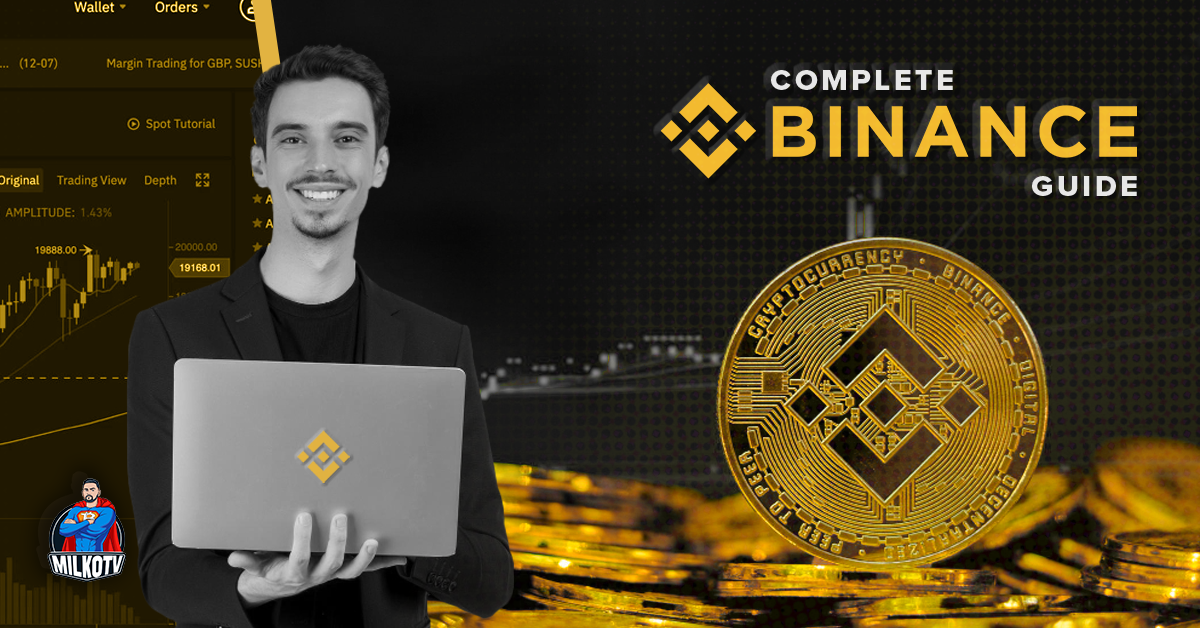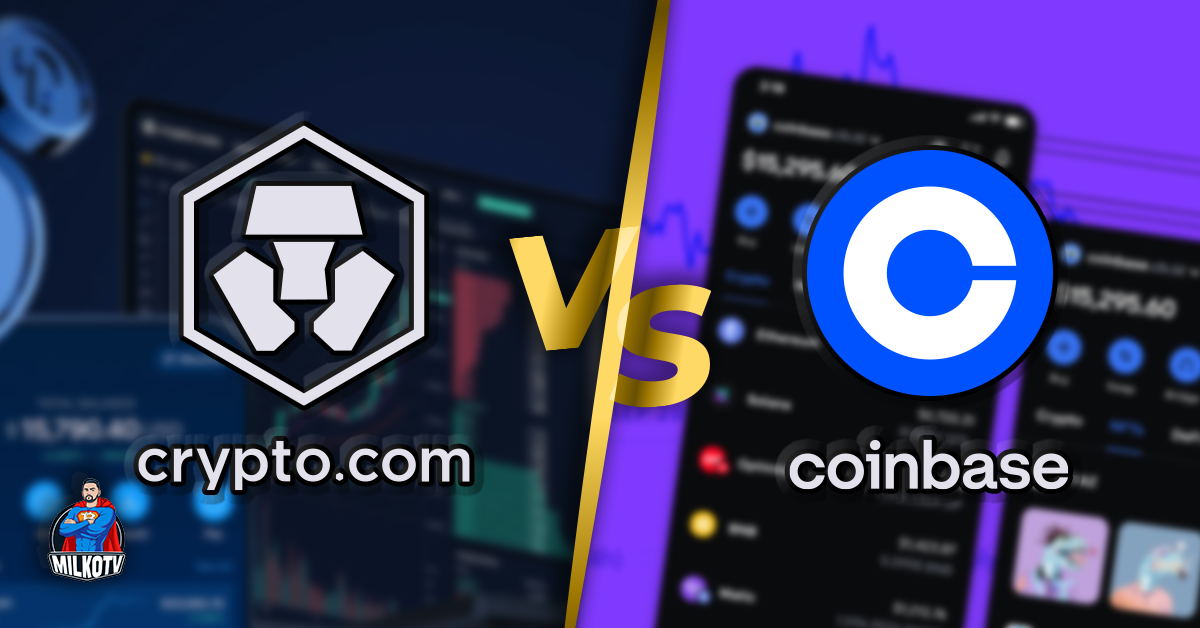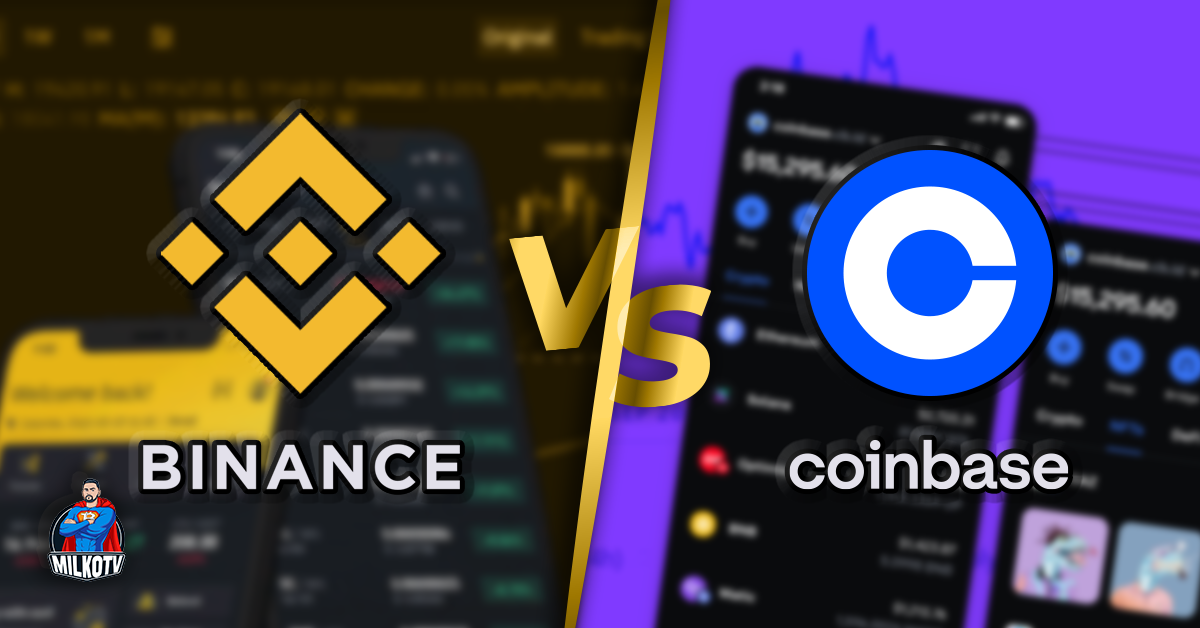Binance is the world’s largest cryptocurrency exchange by trade volume, meaning more trading happens on Binance than on other crypto exchanges. In this guide, you will learn everything you need to know about Binance.
What is Binance?
Binance is a centralized cryptocurrency exchange that has become the touchstone of the crypto industry. The term Binance comes from merging the words Binary and Finance together.
Binance leads crypto exchanges in trading volume, facilitating over $7.7 trillion worth of trades in 2022 despite the bear market. Binance is currently registered in the Cayman Islands.
The exchange is widely popular for its low fees and offering a wide selection of crypto-crypto trading pairs. Binance reportedly has over 110 million verified users and is present in 180 different countries.
History of Binance Exchange
The Binance exchange was launched in July 2017 by Chengpeng Zhao, an entrepreneur, investor, and software engineer well-known for creating high-frequency trading software and CMO He Yi.
Binance CEO Changpeng Zhao is now one of the most prominent faces and proponents of the crypto industry. “CZ,” The exchange platform, was launched after the company completed an Initial Coin Offering (ICO) for its ecosystem token Binance Coin (BNB).
By the start of 2018, Binance was already one of the largest cryptocurrency platforms in the world. The exchange enjoyed early success because of its very low fees and wide selection of trading options.
Company Beginnings and Move Out of China
Binance’s headquarters was initially located in China. However, as China began passing more and more bans on crypto, the firm moved to Japan and then to Malta once Japan’s regulations became tighter. Currently, the company is registered in the Cayman Islands.
The Binance Chain and the Binance Smart Chain (BSC) Network
When Binance launched, it was on the Ethereum chain, with its BNB an ERC-20 token. However, as Binance enjoyed success in the market in 2019, the project migrated from Ethereum to its own network, the Binance Chain.
To fix the programmability restrictions of the Binance Chain, the company launched the Binance Smart Chain (BSC) in 2020 to be smart contracts compatible. BSC also allowed developers to create decentralized applications (DApps).
In addition, the Ethereum Virtual Machine was implemented by BSC. However, in February 2022, the company will merge the Binance Smart Chain and the Binance Chain to form the BNB Chain.
The BNB Chain was created to increase interoperability and develop the underlying infrastructure of the “world’s parallel virtual environment,” a step forward in Binance’s recent MetaFi efforts.
The Binance Coin (BNB)
According to Binance CEO Changpeng Zhao, the BNB token now stands for “Build and Build.” Binance Coin is the native token for both the BSC and Binance Chain.
Transaction fees on the platform are paid in BNB. It is also the governance token for the entire ecosystem. BNB is a deflationary asset, with the exchange performing quarterly burns for the asset.
Launch of Stablecoin
As part of the company’s expansion plans, in September 2019, the company introduced a USD-backed stablecoin named Binance USD (BUSD). The stablecoin was launched in conjunction with Paxos, a New York-based financial institution.
However, the BUSD stablecoin is “wholly owned and managed by Paxos.” Paxos provided monthly reports on BUSD backing and attestations by a third-party accounting firm.
After Paxos was issued a wells notice by the U.S. Securities and Exchange Commission (SEC), the company was ordered to stop minting new BUSD coins. However, BUSD still remains the third-largest stablecoin ranked by market cap.
Binance Security Breaches
The growth of Binance made it a significant target for cybercriminals. In 2019, the exchange fell to a “large-scale security breach.” The hackers stole over 7,000 BTC, worth over $40 million.
The Binance Smart chain suffered its first hack in October 2022 after the BSC Token Hub was exploited. The BSC token hub is an internal cross-chain bridge facilitating token transfers between the BNB Chain and the BNB Smart Chain.
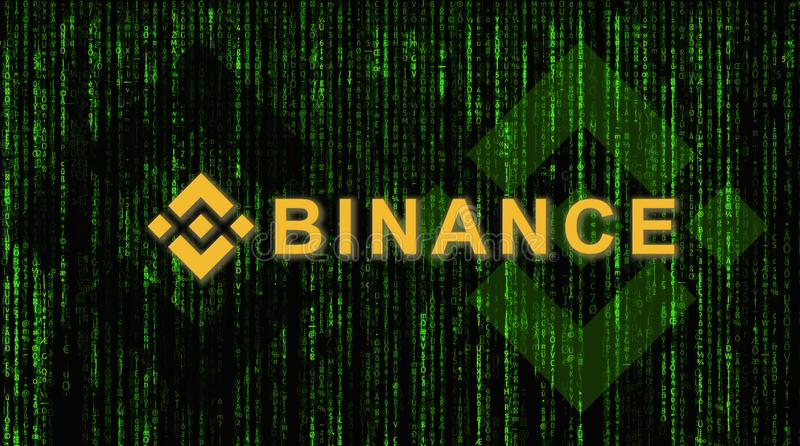
Binance reacted quickly to the attack, and the hacker was only to make off with about $110 million instead of $570 million.
For a company managing an ecosystem of cryptocurrency features, Binance has maintained an excellent security track record.
The Binance Secure Asset Fund
In 2018, Binance launched the Secure Asset Fund for Users (SAFU) to act as an emergency insurance fund to offer protection to its users in extreme circumstances.
Binance committed a percentage of trading fees to grow it to a sizable amount. The SAFU fund wallets comprise BNB, BTC, USDT, and TUSD, currently worth approximately $1 billion.
How to Buy Crypto on Binance
There are different ways of buying crypto on Binance. You can buy crypto using bank transfers, debit/credit cards, the peer-to-peer (P2P) market, Binance Pay, or other third-party payment options. However, you will need to confirm which option is available in your region.
To start the purchase, click on “Buy Crypto,” which will show the options available in your region. Select the crypto you want to buy and how much you want (in the currency you choose) to buy.
Proceed to make the payment, and the crypto will be deposited in your Binance funding wallet. After purchasing an asset, you can exchange the digital asset with others supported on the platform.
Binance is a virtual asset exchange that supports 50 different fiat currencies, bank transfers, and debit/credit card payments. Where any of these options are not available, you can purchase virtual assets using P2P.
How to Sell/Withdraw Crypto on Binance
Selling crypto on the virtual asset exchange is a straightforward process. In your funding wallet, click on “sell crypto.” On the page that pops up, choose the crypto asset you want to sell, enter the amount, and select the FIAT currency of your choice.
Confirm the transaction, and the platform will automatically transfer the money to your fiat wallet. In some regions, you can send money from your fiat wallet directly to your bank account.
P2P is another method you can use to sell crypto. When you click on Sell Crypto, select the P2P option. To sell crypto on P2P, you must open an order, which will be visible to other users.
On the P2P page, click “New Order” and select “Sell Crypto.” Enter the amount of crypto you want to sell, the rate you want to sell, and the bank details you like the money deposited.
Binance will open a P2P sell order and hold the crypto in escrow until another user meets the transfer requirements. When you have confirmed the amount has been deposited to your account by a willing buyer, you can instruct the platform to release the crypto to them.
How To Trade Cryptocurrency on Binance
To trade on Binance, you must create an account and complete the necessary know-your-customer (KYC) requirements. Next, you must fund your account before and transfer the assets to your trading account within Binance.
There are seven trading order types on Binance, including limit order, market order, stop-limit order, stop market order, trailing stop order, post-only order, and limit TP/SL order.
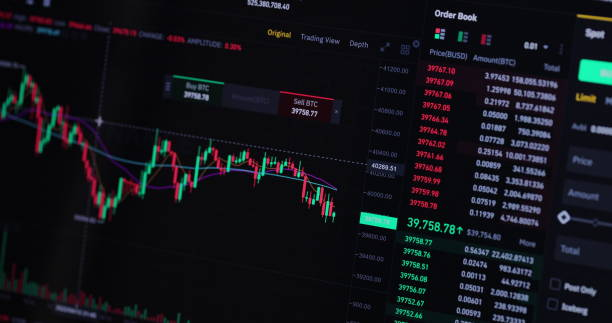
To trade, you will need to select the crypto you want to trade and choose one of these order types. Next, enter the order details (Buy or Sell), your take profit, and open the order.
Binance has advanced charts and market tools to help you analyze the market before you open an order. You can also use TradingView’s interface on the trading platform for better analysis.
How to Earn on Binance
The platform also offers users the opportunity to earn via Binance Earn. Here, users can deposit or stake crypto and stablecoins and earn interest on their assets.
Binance Earn offers investors multiple options, and the interest is calculated based on the asset. Some assets can yield up to 104% annual interest, making Binance Earn an excellent option for investors looking for passive income.
Binance Supported Cryptocurrencies
Binance exchange has built an unmatched portfolio of cryptocurrencies, supporting over 357 assets and 1400 trading pairs. As a result, Binance is the exchange most investors turn to for trading many altcoins.
Binance.US, the United States subsidiary of Binance, is now an independent entity. Due to the jurisdiction of its region, Binance.US supports fewer crypto assets, around 130 compared to the 350+ listed on the international exchange.
Binance Fee Structure
Binance doesn’t charge fees for depositing crypto assets like Bitcoin (BTC), Tether (USDT), and Ethereum (ETH) and purchases made with wire and bank transfers.
However, you may pay up to 3.75% in fees when purchasing crypto with some credit or debit cards. The Binance Visa cards charge only a 0.9% transaction fee for transactions and ATM withdrawals.
There are no withdrawal fees on the platform. However, you will pay network fees. These network fees vary depending on the condition at the time of the transaction.
Trading on Binance exchange (or any platform at all) incurs a “maker” or a “taker” fee. Taker fees on the platform range from 0.4500% to as low as 0.0375%, while maker fees are between 0.3000% and 0.0150% – cheaper than the industry averages.
If you trade and pay in the native token, Binance Coin (BNB), the fees will be reduced by 25%. To know these fees compare against other exchanges, read Binance vs. Coinbase.
Binance Mobile And Desktop Application
In addition to its web-based platform, Binance offers its services via mobile and desktop applications The Binance applications are available on iOS and Android, while the desktop application is available on Mac and Windows.
The Binance applications offer smoother user experiences compared to the browser-based platform, which can suffer lag when the exchange experiences very high transaction volumes. The desktop application is the better option for users looking for minimal lag and trading security tokens.
Binance Wallet
In addition to the mobile and desktop application, Binance offers a non-custodial wallet application, Trust Wallet. Binance said the Trust Wallet is built with military-grade encryptions for extra security measures.
As a non-custodial wallet, Trust Wallet is a secure and reliable option for Binance users looking to manage their cryptocurrency portfolio. The wallet also supports the BSC, meaning users can access DeFi, dApps, NFTs, and more from the app.
Binance Non-Fungible Token Marketplace
Binance is more than a platform for crypto trading, buying and selling asset, with the company releasing a non-fungible token (NFT) marketplace in 2021. The marketplace is only available to Binance account holders.
The Binance NFT marketplace is easy to use and features low fees set at a 1% fee on every transaction. The platform can be considered an extension of the broader ecosystem, creating an interconnected user interface.
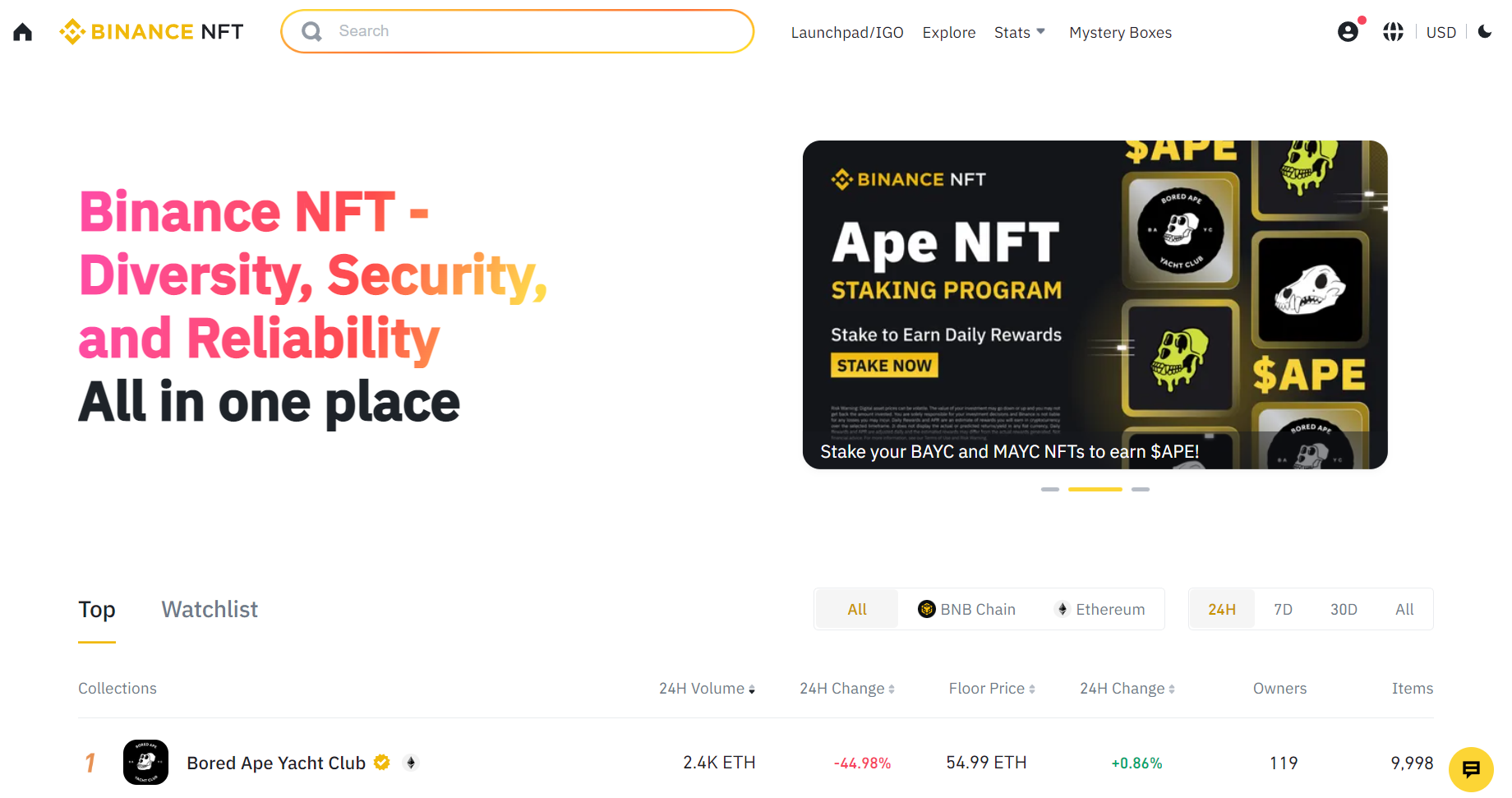
The marketplace features NFTs from the BSC and Ethereum blockchains. On the marketplace, you can buy and trade NFTs in art, sports, gaming, entertainment, collectibles, and charity.
How Safe is Binance?
Binance is one of the safest exchanges, offering military-grade end-to-end encryption to ensure that users’ digital assets are secured both in storage and in transit. The platform also uses this measure to secure the personal data of users that enter the platform.
There is also an Anti-Phishing Code used to secure the data of users when online. There are other security measures, including a strict verification protocol and two-factor authentication on Binance.
U.S. dollars stored on Binance are FDIC (Federal Deposit Insurance Corporation) insured. SAFU is also a move by the crypto asset exchange to secure users’ funds.
Conclusion
Binance is an excellent option among the world’s many crypto exchanges, offering ultra-low fees, a wide selection of crypto and trading pairs, along with advanced trading features.
In addition, the company offers more than just crypto exchange services, integrating a decentralized exchange top DApps, NFTs, cross-chain bridge solutions, and Binance Smart Chain.

